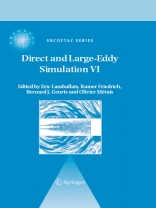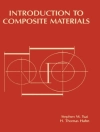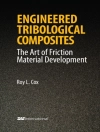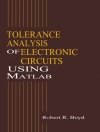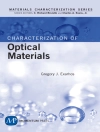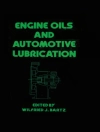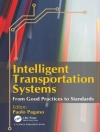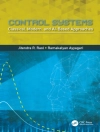The sixth ERCOFTAC Workshop on ‘Direct and Large-Eddy Simulation’ (DLES-6) was held at the University of Poitiers from September 12-14, 2005. Following the tradition of previous workshops in the DLES-series, this edition has reflected the state of the art of numerical simulation of transitional and turbulent flows and provided an active forum for discussion of recent developments in simulation techniques and understanding of flow physics. At a fundamental level this workshop addressed numerous theoretical and physical aspects of transitional and turbulent flows. At an applied level it contributed to the solution of problems related to energy production, transportation and the environment.
Since the prediction and analysis of fluid turbulence and transition continues to challenge engineers, mathematicians and physicists, DLES-6 covered a large range of topics, from the more technical ones like numerical methods, initial and inflow conditions, the coupling of RANS and LES zones, subgrid and wall modelling to topics with a stronger focus on flow physics such as aero-acoustics, compressible and geophysical flows, flow control, multiphase flow and turbulent combustion, to quote only a few.
The present proceedings contain the written versions of 7 invited lectures and 82 selected and reviewed contributions which are organized in 16 parts entitled Turbulent Mixing and Combustion; Subgrid Modelling; Flows involving Curvature, Rotation and Swirl; Free Turbulent Flows; Multiphase Flows; Wall Models for LES; Complex Geometries and Boundary Conditions; Flow Control; Heat Transfer; Aeroacoustics; Variable Density Flows; Inflow/Initial conditions; Separated/Reattached Flows; Hybrid RANS-LES Approach; Compressible Flows; and Numerical Techniques and POD.
表中的内容
Preface; Contents; Part I: Invited Lectures: Direct Numerical Simulation of Turbulence and Scalar Exchange at Gas-Liquid Interfaces, by Sanjoy Banerjee; Large Eddy Simulation of Premixed Turbulent Combustion: FSD-PDF modeling, by Luc Vervisch, Pascale Domingo; Industrial LES with Unstructured Finite Volumes, by D. Laurence; Current understanding of jet noise-generation mechanisms from compressible large-eddy-simulations, by Christophe Bailly, Christophe Bogey; Stable stratified, wall bounded, turbulent flows, by Vincenzo Arrnenio; Physics and Control of Wall Turbulence, by John Kim; The physics of turbulent mixing and clustering, by J.C. Vassilicos; Part II: Turbulent Mixing and Combustion: LES of Premixed Flame Longitudinal Wave Interactions , by Christer Fureby, Christophe Duwig; Direct Numerical Simulation of Reacting Turbulent Multi-Species Channel Flow, by L. Artal, F. Nicoud; DNS/MILES of Reacting Air/H2 Diffusion Jets, by L. Gougeon, I. Fedioun; Direct Numerical Simulation of turbulent reacting flows involving dilute particles, by Gdbor Janiga, Dominique Thévenin; Dissipation of Active Scalars in Turbulent Temporally Evolving Shear Layers with Density Gradients Caused by Multiple Species, by Inga Mahie, Jörn Sesterhenn, Rainer Friedrich; Part II: Subgrid Modelling : Symmetry invariant subgrid models, by Dma Razafindralandy, Aziz Hamdouni; Formal properties of the additive RANS/DNS filter, by Massimo Gerrnano, Pierre Sagaut; Analysis of the SGS energy budget for deconvolution- and relaxation-based models in channel flow, by Fhilipp Schlatter, Steffen Stolz, Leonhard Kleiser; Symmetry-preserving regularization of turbulent channel flow, by Roel Verstappen; Large-eddy simulations of channel flows with variable filter-width-to-grid-size ratios, by Ana Cubero, Ugo Piomelli; LES of Transition to Turbulence in the Taylor Green Vortex, by Dimitris Drikakis, Christer Fureby, Fernando F. Grinstein, Marco Hahn, David Youngs; Stochastic SGS modelling inhomogeneous shear flow with passive scalars Linus Marstorp, Geert Brethouwer, Âme Johansson; Towards Lagrangian dynamic SGS model for SCALES of isotropic turbulence, by Giuliano Dc Stefano, Daniel E. Goldstein, Oleg V. Vasilyev, Nicholas K.-R. Kevlahan; The sampling-based dynamic procedure for LES: investigations using finite differences , by G. Winckelmans, L. Bricteux, L. Georges, G. Daeninck, H. Jeanmart; On the Evolution of the Subgrid-Scale Energy and Scalar Variance: Effect of the Reynolds and Schmidt numbers, by C. B. da Silva, J.C.F. Pereira; Part IV: Flows involving Curvature, Rotation and Swirl: Large Eddy Simulation of Flow Instabilities in Co-Annular Swirling Jets, by M. Garcia- Villalba, J. Fröhlich, W. Rodi, 0. Petsch and H. B’iichner; Large Eddy Simulations of the turbulent flow in curved ducts: influence of the curvature radius, by Cécile Munch, Olivier Métais; Large Eddy Simulation of Transitional Rotor-Stator Flows using a Spectral Vanishing Viscosity Technique, by Eric Séverac, Eric Serre, Patrick Bontoux, Brian Launder; DNS of Rotating Homogeneous Shear Flow and Scalar Mixing, by G. Brethouwer, Y. Matsuo; Direct Numerical Simulation of Turbulent Rotating Rayleigh—Bénard Convection , by R.P.J. Kunnen, B.J. Geurts, H.J.H. Clerex; DNS of a Turbulent Channel Flow with Streamwise Rotation – Investigation on the Cross Flow Phenomena, by Tanja Weller, Martin Oberlack; Dynamic structuring and mixing efficiency in rotating shear layers, by Bernard J. Geurts, Darryl D. Hoim; DNS of turbulent heat transfer in pipe flow with respect to rotation rate and Prandtl numbereffects, by L. Redjem Saad, M. Ould-Rouis, A. A. Feiz, G. Lauriat; DNS of the turbulent Ekman layer at Re=2000, by G N Coleman, R Johnstone, M Ashworth; Part V: Free Turbulent Flows : Large-Eddy Simulation of Coaxial Jets: Coherent Structures and Mixing Properties, by Guillaume Balarac, Mohamed Si-Ameur, Olivier Métais, Marcel Lesieur; Computation of the Self-Similarity Region of a
